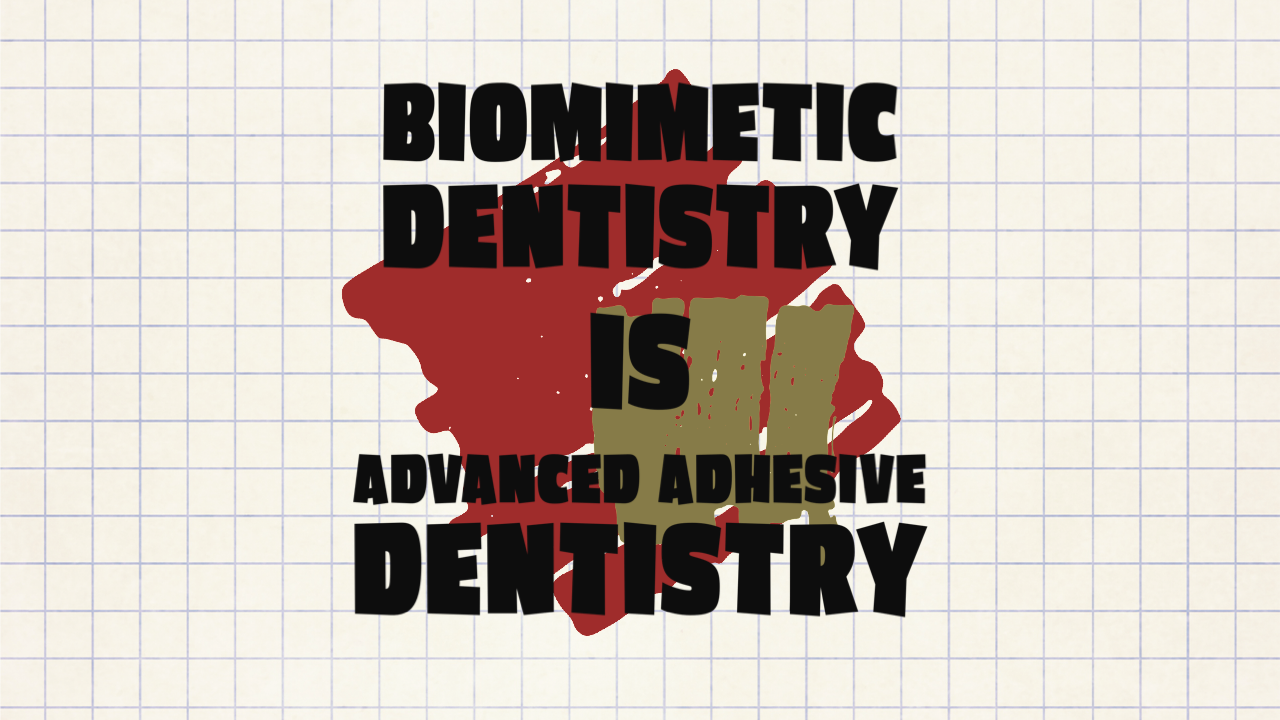TBU #036: Biomimetic Dentistry Is Advanced Adhesive Dentistry
Jan 28, 2023
New Issue of The Biomimetic Uprising
Read Time: 3 min
I'm super excited to announce a brand new Biomimetic Mastermind group! Monthly peer reviewed meetings, group chats, challenges, mini courses, award prizes, badges, articles, etc
Failures in traditional dentistry can be attributed to the inability to achieve treatment goals based on the principles of biomimetic dentistry. The cycles of retreatment always lead to more subsequent tooth removal. Often times with failing restorations we see pulp infection that can lead to pulp death and tooth loss. These treatment failures are all from the failure to keep a strong bond that seals and reconnects the tooth. If we look to dissect what went wrong and why, the failures can be attributed back to the weak bonds that were established in NON-stress reduced restorations. Meaning the restorations had a C-Factor configuration and steps weren’t done, or weren’t done properly, to reduce the residual and polymerization stresses that were placed on the tooth. Implementing the proper biomimetic paradigms and protocols will solve these recurring problems.
Biomimetic protocols are founded on advancements in adhesive dentistry. Adhesive dentistry eliminates the need for traditional tooth structure reduction to insure mechanical retention thus moving dentistry out of the amalgam and full coverage crown era into the biomimetic era of advanced adhesive dentistry (Magne,2006).
One of the pioneers of American adhesive dentistry summarized this well:
“When we consider that tooth reduction correlates with subsequent endodontic treatment, the preferred treatment option often is one that relies on minimal tooth reduction. Adhesion, with less need for tooth reduction, is a highly desirable shift away from tooth preparation for mechanical retention..Maximum tooth conservation is the compelling advantage in using these materials and methods.”
-Ray Bertolotti. Dental Clinics of North America 51 (2007) 433-451.
Achieving this conservative goal has been elusive for most dentists because of the reasons summarized by an early leader of European adhesive research:
“The general practitioner and specialist alike are confronted with a mass of raw information, neither sorted out, nor put into a hierarchy, and often contradictory…Adhesive dentistry still requires sophisticated procedures which are highly operator dependent. However the potential high quality results possible with adhesive techniques justify the special effort required.
-Prof. Dr. Michel Degrange, Editor, Journal of Adhesive Dentistry.
JAD 2006 vol 8 #3 pp 139-140.
This mass of raw information and sophisticated procedures that Dr Degrange initially saw as a barrier to practicing dentists is actually what helped start the idea of biomimetic dentistry. Biomimetic dentistry is based on years of research and collaboration. There has been numerous studies and advancements that have helped draw the conclusions about what is most important and fundamental to advanced adhesive (biomimetic) restorative dentistry.
There were numerous early adopters that attempted to promote a conservative approach but the lack of the adhesive knowledge prevented their long term success. Most dentists trying the earlier techniques became frustrated with inconsistent results of adhesive direct, semi-direct and indirect techniques and then, in frustration, continued with full coverage restorations with PFM or full ceramic crowns.
In the year 2002 two landmark publication showed the way to achieve the highly bonded restorations using an indirect or direct restorative approach. Magne and Belser’s Bonded Porcelain Restorations in the Anterior Dentition A Biomimetc Approach and Deliperi and Bardwell JADA article the priciples of immediate dentin sealing and stress reducing layering paved the way to make the adhesive silent revolution to evolve into the biomimetic revolution.
These publications helped to complete other important work and to improve on some of the earlier techniques, especially in the deep areas of the tooth were bonding can be hard.
With the implementation of biomimetic protocols hundreds of dentists have restored hundreds of thousands of teeth without full coverage tooth reduction. These biomimetically restored teeth prevent pulp death, even in extremely deep preparations. Its safe to say, numerous patients have benefited from biomimetic dentistry. In my practice alone, 1600-2000 people.
People are always amazed when you say, “Yes, we can save that” or “No, we dont need to shave your tooth down to put a crown on”. No one wants more work done to them than what is truly needed. Biomimetic dentistry gives them the pathway for patients to have a healthy life with improved oral health. Patients might not always understand what Biomimetic Dentistry is, but they will appreciate you being conservative and giving them a long lasting restoration.
Whenever you're ready, here are the ways I can help you:
- If you're looking for better application in your practice, take a look at our online courses and guides
- The Foundations Of Biomimetic Dentistry
- How To Do Biomimetic Posterior Direct Composites.
- Get our 53 page biomimetic protocols guide for posterior direct restorations.
- Join our Biomimetic Mastermind
- Work with me 1:1 to grow your biomimetic dental practice.



